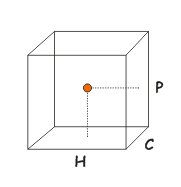Go to Tutorial

DESCRIPTION
The 3D HCP experiment is a 1H-13C-31P
triple-resonance experiment specifically designed to assign the
ribose H3'/C3', H4'/C4' on the 5' side and, H4'/C4' and H5',H5''/C5' resonances
on the 3' side of the intervening phosphorus in 13C-labeled nucleic acids.

REQUIREMENTS
Implementation on AVANCE spectrometers equipped with a third
channel and gradient technology.
VERSIONS
The 3D HCP pulse sequence
(
94JACS4983
and
94JACS6472
)
consists of the following basics steps:

-
Initial transfer from 1H to 13C
via 1J(CH) using an INEPT pulse sequence.
-
Transfer from 13C to 31P via
nJ(CP) using another INEPT pulse sequence.
-
31P chemical shift evolution during the
variable evolution t1 period.
-
Transfer back to 13C from 31P using a retro-INEPT
pulse sequence.
-
13C chemical shift evolution during the
variable evolution t2 period
-
Magnetization is finally transferred back to the 1H protons
using a CH-optimized PEP methodology.
-
Proton acquisition under 13C decoupling.
Other approaches:
EXPERIMENTAL DETAILS
2JC3'(i)-P(i) and 2JC5'(i+1)-P(i)
coupling constants are about 3-5 Hz, and
3JC4'(i)-P(i) and 3JC4'(i+1)-P(i)
coupling constants are about 8-10 Hz
SPECTRA
In the HCPCH spectra, the H-4'/C-4', H-3'/C-3', H-5',H-5''/C-5' pairs are
sorted in a 2D spectrum as a function of 31P chemical shift
in the third dimension.


RELATED TOPICS